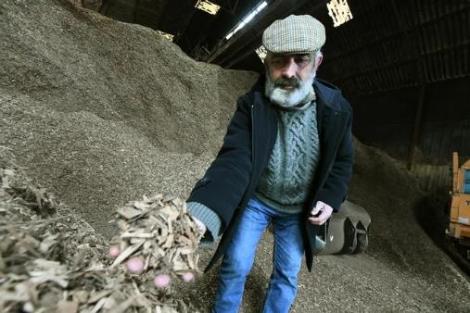Energy transition - Re-familiarising ourselves with energy production : a contemporary challenge
Chaire Paysage et énergie (ENSP), 2022
The French landscape was built around the mastery of energy: mills, canals, barrages, ovens, structured the landscape… But they gradually disappeared. The 20th century paved the way for gas, oil and nuclear power, and by concentrating its programmes on the use of these energies, the other natural resources were taken out of the picture… However, hydroelectricity, biomass, geothermal energy, wind and solar power are now the flagship of the ecological transition. The different sources of renewable energy (RE) coexist in the production of energy in France: essential to prepare the energy system of tomorrow by diversifying the energy mix of our country, they upset our habits by the implantation in the landscape, and it is a whole story that must be rebuilt to relearn to see these « new » landscapes of energy in our environment
In the face of climate change and the erosion of life, the energy transition appears decisive in the Great Transition as evoked by certain futurists. This is because energy is deeply structuring our frameworks and lifestyles, which must be changed to reduce our consumption and produce more cleanly. Curiously, in France, the second industrial revolution of the 20th century, that of oil, gas and electricity, while massively increasing energy consumption for the majority, tended to make its production disappear from the daily framework: On the one hand by importing it by sea and underground with rare ports to receive oil and gas, on the other hand by concentrating its production in large but few facilities (19 nuclear power plants on the metropolitan territory) or far from living areas (hydroelectric dams in the mountains). This is a far cry from the familiar energy landscape of previous centuries, when Vauban at the end of the 17th century counted 80,000 mills in the country just for grinding flour, including 16,000 windmills, to which were added 15,000 industrial mills and 500 metallurgical plants using hydraulic power. In addition to these ubiquitous machines, there was the intense economic life developed around the dominant energy of wood to manage, cut, transport, transform and consume it, but also to share the multiple uses of the forest. Industry was everywhere, in both rural and urban areas, in order to be as close as possible to scarce energy resources that were not, or could not be, transported 1.
Today’s French people, unlike their forebears, find themselves in the uncomfortable position of being unaccustomed to the landscape of energy, which has become largely abstract, even though the contemporary issue is bringing it back to the forefront in an urgent and very concrete manner. This is why the appearance of wind turbines in the landscape causes hives for some people, not to mention photovoltaic fields, methanisation plants and offshore wind turbines, the full development of which is not a matter of consensus. Moreover, the irruption of contemporary renewable energies is occurring after decades of landscape disruption in favour of fossil (and fissile) energies, which makes their acceptability much more delicate. « In this context, the challenge of transforming a landscape of centralised and invisible energies into a landscape of distributed and ubiquitous energies is enormous »2.

Yet this is the challenge that must be met. The energy transition, while waiting for a hypothetical nuclear fusion in the long term, leads to the development of numerous and ubiquitous installations of renewable or transitional energies in the countryside, at sea, in cities and even on our roofs and in our gardens. It also implies reshaping landscapes that have been eroded by overconsumption of energy (the so-called « oil landscapes », marked by urban sprawl, soil artificialisation, pollution and agro-industrial simplification) into sober, decarbonised, biologically rich landscapes that recreate social links. The challenge is enormous but not insurmountable, because the French are evolving in their assessments as they assimilate the importance of the energy transition to meet the challenge of climate change. If we look at the case of wind turbines - the most sensitive in terms of landscape, given the size and number of machines - we can see that nearly three-quarters of our fellow citizens have a positive image of them and would like to see them developed3.
The gap between the good overall perception of wind turbines by the French and the number of local conflicts linked to their implementation should alert us: a problem of method arises. The purpose of this guide is to propose some ways to progress in the field of energy landscape, by promoting an approach that is still insufficiently known: the landscape approach.
-
1 The ENSP Landscape and Energy Chair has coordinated a book on the history of energy landscapes: Paysages et énergies, une mise en perspective historique, Sylvain Allemand, Editions Hermann, 2021
-
2 Bertrand Folléa, L’Archipel des métamorphoses, la transition par le paysage, Ed. Parenthèses 2019.
-
3 A Harris Interactive poll on « the French and wind energy », conducted for the Ministry of Ecological Transition in August 2021, reveals that 73% have a good image of wind turbines and 71% are in favour of their development.